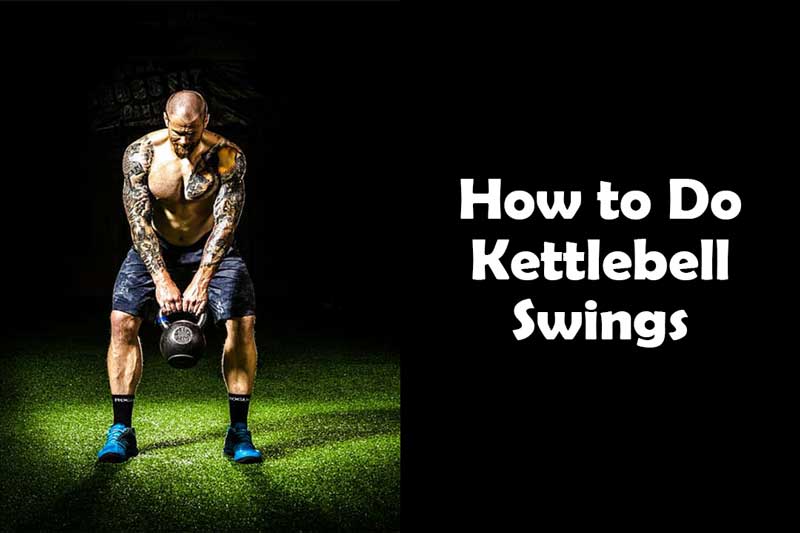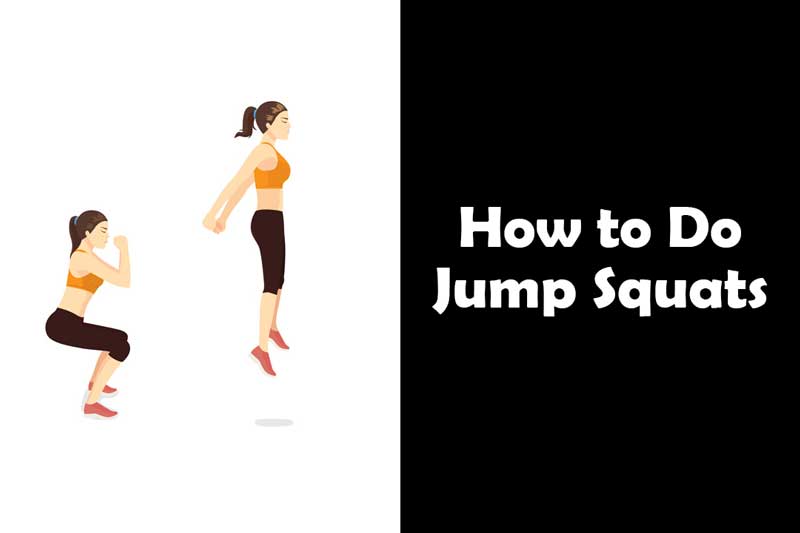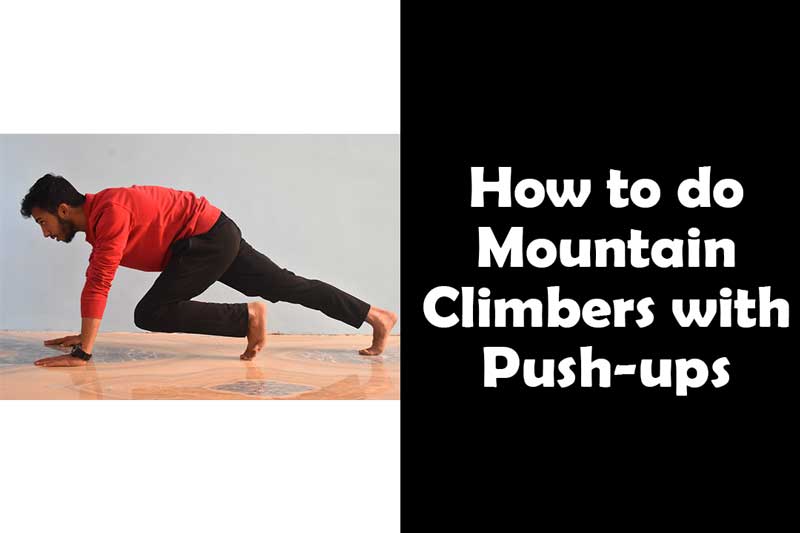If you’re looking to add an effective full-body exercise to your fitness routine, kettlebell swings are worth considering. This dynamic movement engages multiple muscle groups and provides a cardiovascular challenge, making it a fantastic addition to any workout. Let it be a fat burning goal or a strength building goal, you can add kettlebell swings to your workout routine.
In this article, we will guide you through the process of mastering kettlebell swings, ensuring you perform them correctly and safely.
What Are Kettlebell Swings?
As the name suggests, kettlebell swings are a compound exercise that involves swinging a kettlebell between your legs and up to shoulder level using a hip thrusting motion.
This exercise primarily targets the posterior chain, which includes the glutes, hamstrings, and lower back.
Additionally, kettlebell swings engage the core, shoulders, and arms, making it a comprehensive workout for your entire body.
Benefits of Kettlebell Swings
Incorporating kettlebell swings into your fitness routine offers numerous benefits. Some of the key advantages include:
1) Full-body workout
Kettlebell swings engage multiple muscle groups simultaneously, providing a comprehensive full-body workout. The explosive hip thrust recruits muscles in the posterior chain, including the glutes, hamstrings, and lower back.
Additionally, the core, shoulders, and arms work synergistically to stabilize and control the movement. This holistic engagement of various muscle groups makes kettlebell swings highly efficient for strengthening and toning the entire body.
2) Improved strength and power
Kettlebell swings are a powerful exercise for developing strength and power, particularly in the posterior chain. The explosive hip drive activates the glutes and hamstrings, promoting increased muscle strength and power generation.
Stronger glutes and hamstrings contribute to improved athletic performance in activities like running, jumping, and lifting.
3) Enhanced cardiovascular fitness
Kettlebell swings are a dynamic and high-intensity exercise that elevates heart rate and challenges the cardiovascular system. When performed with proper form and technique, they provide a cardiovascular stimulus similar to running or cycling.
The more repetitions you do the more challenging and heart-pacing it will be. The more calories you will burn.
Regular inclusion of kettlebell swings in your workout routine can improve cardiovascular endurance, increase stamina, and enhance overall heart health.
4) Increased fat burning
Kettlebell swings are a fantastic exercise for burning calories and promoting fat loss. The explosive nature of the movement, combined with the engagement of multiple muscle groups, results in a high metabolic demand.
Activation of more muscles leads to more energy demand and hence, more calorie burn.
This increased calorie expenditure not only supports weight loss but also helps to reduce body fat percentage.
5) Improved posture and stability
Kettlebell swings target the muscles responsible for maintaining good posture and stability. The exercise strengthens the core, including the abdominal muscles and lower back, which play a crucial role in maintaining an upright posture and spinal alignment.
By strengthening these muscles, kettlebell swings can help alleviate posture-related issues and enhance overall stability and balance.
6) Time-efficient
For those with limited time for workouts, kettlebell swings are a highly time-efficient exercise. They provide a challenging and effective full-body workout in a relatively short amount of time.
With just a few sets of kettlebell swings, you can target multiple muscle groups and achieve significant fitness benefits, making it an ideal choice for individuals with busy schedules.
Muscles Worked During Kettlebell Swings
Kettlebell swings are a highly effective exercise that targets multiple muscle groups simultaneously, making it a valuable addition to any workout routine. Here are the key muscles worked during a kettlebell swing:
1) Glutes (Gluteus Maximus)
The glutes play a significant role in kettlebell swings. As you forcefully extend your hips during the upward phase of the swing, the gluteus maximus, the largest muscle in the gluteal group, contracts to generate power and propel the kettlebell forward.
Strong glutes not only enhance your athletic performance but also contribute to overall lower body strength and stability.
2) Hamstrings
The hamstrings, a group of muscles located at the back of the thighs, are heavily engaged during kettlebell swings. They work in synergy with the glutes to initiate the explosive hip extension, helping to swing the kettlebell upward.
Strong and flexible hamstrings contribute to improved athletic performance, better knee stability, and reduced risk of hamstring injuries.
3) Core Muscles
The core muscles, including the rectus abdominis (six-pack muscles), obliques, and deep stabilizers such as the transverse abdominis, play a crucial role in stabilizing the body during kettlebell swing. They provide support and help maintain proper spinal alignment throughout the movement.
The core muscles engage isometrically to resist the rotational forces generated by the swinging motion, promoting core strength and stability.
4) Quadriceps
While the primary focus of the kettlebell swing is on the posterior chain, the quadriceps muscles at the front of the thighs also contribute to the movement.
They engage during the initial hip hinge and assist in the knee extension as you stand up forcefully during the upward phase of the swing.
5) Hip Flexors
The hip flexor muscles, including the iliopsoas and rectus femoris, play a stabilizing role during kettlebell swings. They help control the hip and pelvis positioning, especially during the downward phase of the swing when the kettlebell is lowering between the legs.
The hip flexors work isometrically to prevent excessive hip extension and maintain proper alignment.
6) Shoulders and Upper Back
The muscles of the shoulders and upper back, including the deltoids, trapezius, and rhomboids, provide stability and control during kettlebell swings.
They work isometrically to keep the shoulders pulled back and maintain proper posture throughout the movement.
The upper back muscles also engage to control the descent of the kettlebell during the downward swing.
7) Forearms and Grip Strength
Kettlebell swing requires a strong grip to hold onto the kettlebell throughout the movement. As a result, the muscles of the forearms, including the flexors and extensors, are engaged to maintain a secure grip.
Regular practice of kettlebell swings can help improve forearm and grip strength.
Equipment and Setup for Kettlebell Swings

Before you start performing kettlebell swings, you’ll need to gather the necessary equipment and set up a suitable space. Here’s what you’ll need:
- Kettlebell: Choose a kettlebell with an appropriate weight for your fitness level. Beginners usually start with a lighter kettlebell, around 8-12 kilograms (18-26 pounds), while more experienced individuals may use heavier weights.
- Clear space: Ensure you have enough space around you to perform the exercise safely. Remove any potential obstacles or hazards.
- Grip: Use an overhand grip on the kettlebell handle with both hands, keeping your palms facing down.
Proper Form and Technique
To execute kettlebell swings correctly and maximize their benefits, it’s crucial to maintain proper form and technique. Follow these steps:
- Starting position: Stand with your feet shoulder-width apart and the kettlebell on the ground between your feet. Keep your back straight, shoulders pulled back, and core engaged.
- Hinging at the hips: Begin the movement by hinging at your hips, pushing them back while maintaining a slight bend in your knees. Allow the kettlebell to swing backward between your legs.
- Drive with your hips: Explosively drive your hips forward, generating power to swing the kettlebell upward. As you thrust your hips, straighten your knees and engage your glutes and core.
- Maintaining control: As the kettlebell reaches its highest point, let it swing forward and up, aiming for shoulder level. Maintain control throughout the movement.
- Downward swing: Allow the kettlebell to swing back down between your legs, and repeat the movement by immediately hinging at your hips again.
Common Mistakes to Avoid
While performing kettlebell swings, it’s important to be aware of common mistakes that can compromise your form and increase the risk of injury. Avoid the following errors:
- Using your arms too much: Remember that the power for kettlebell swings comes from your hips and not your arms. Avoid using your arms to lift the kettlebell.
- Rounding your back: Maintain a neutral spine throughout the exercise. Avoid rounding your back or overarching it, as this can strain your lower back.
- Lifting with your shoulders: Focus on using your hips to drive the movement, rather than relying on your shoulders or upper body.
- Swinging too high: Keep the kettlebell swing controlled and aim for shoulder level. Avoid swinging the kettlebell above your head. This can lead to uncontrolled movement and hence, can lead to injuries.
- Neglecting proper breathing: Breathe out forcefully as you drive your hips forward and swing the kettlebell up. Inhale as you swing the kettlebell back down.
Variations and Progressions of Kettlebell Swings
Once you have mastered the basic kettlebell swing, you can explore variations and progressions to add variety and challenge to your workouts. Some options to consider include:
- Single-arm kettlebell swings: Perform the swings using only one arm at a time, alternating between each repetition.
- Kettlebell snatch: Start the swing movement as usual, but continue the momentum to lift the kettlebell overhead, finishing in a locked-out position.
- Double kettlebell swings: Use two kettlebells instead of one, increasing the load and requiring greater stabilization and coordination.
Incorporating Kettlebell Swings into Your Workout Routine
To effectively incorporate kettlebell swings into your workout routine, consider the following tips:
- Warm-up: Prior to performing kettlebell swings, engage in a dynamic warm-up routine that targets the muscles you’ll be using.
- Start with lighter weights: If you’re new to kettlebell swing, begin with a lighter kettlebell to practice proper form and technique before gradually increasing the weight.
- Reps and sets: Perform kettlebell swings in sets of 10-20 reps, depending on your fitness level and goals. Beginners can do 10-15 reps; anyone already used to it can go up-to 30 reps per set. Start with 2-3 sets and progress as you become more comfortable.
- Rest and recovery: Allow your body sufficient rest between sets to recover and maintain good form throughout each repetition. For a beginner, 1-2 minutes of rest is enough. For an advanced person, 20-40 sec is enough between sets.
- Combine with other exercises: Incorporate kettlebell swings into a well-rounded workout routine that includes strength training, cardiovascular exercises, and flexibility work.
Safety Tips
To ensure your safety while performing kettlebell swings, keep the following tips in mind:
- Start slowly: If you’re new to kettlebell swing, start with a lighter weight and focus on mastering the technique before progressing to heavier loads.
- Maintain control: Always maintain control over the kettlebell throughout the exercise. Avoid swinging it too forcefully, as this can strain your muscles or cause injury.
- Listen to your body: Pay attention to any discomfort or pain during the exercise. If something doesn’t feel right, stop and consult with a fitness professional or healthcare provider.
- Stay hydrated: Drink water before, during, and after your workout to stay properly hydrated.
- Consult a professional: If you’re unsure about proper form or have any pre-existing conditions, consider working with a certified fitness professional to ensure you’re performing kettlebell swings safely.
Nutrition and Hydration
To support your fitness goals and optimize your performance during kettlebell swing workouts, focus on maintaining a well-balanced diet and staying hydrated. Here are some general nutrition and hydration guidelines:
- Fuel your body: Consume a balanced mix of carbohydrates, proteins, and healthy fats to provide the energy and nutrients your body needs for exercise.
- Hydration: Drink water regularly throughout the day, especially before and after your workouts. Hydration is essential for optimal performance and recovery.
- Pre-workout meal: Eat a light meal or snack containing carbohydrates and protein approximately 1-2 hours before your kettlebell swing session.
- Post-workout recovery: After your workout, replenish your energy stores by consuming a nutritious meal or snack within 1-2 hours. Include a mix of carbohydrates and protein to aid in muscle recovery.
Conclusion
Kettlebell swings are an excellent exercise for strengthening your entire body, improving cardiovascular fitness, and promoting fat loss. By following the proper form and technique, incorporating variations, and integrating this full body exercise into your workout routine, you can reap the benefits of this dynamic movement.
Remember to prioritize safety, listen to your body, and consult with professionals if needed. Now, get swinging and enjoy the transformative power of kettlebell training!
Frequently Asked Questions
1) Can anyone do kettlebell swings?
Yes, kettlebell swings can be performed by individuals of various fitness levels.
However, if you have any underlying health conditions or injuries, it’s recommended to consult with a healthcare professional before attempting kettlebell swings.
2) How often should I do kettlebell swings?
The frequency of kettlebell swing workouts depends on your fitness goals and overall exercise routine.
Start with 1-2 sessions per week and gradually increase as your strength and endurance improve.
3) Can kettlebell swings help with weight loss?
Yes, kettlebell swing can contribute to weight loss by burning calories and increasing your heart rate.
However, they should be combined with a balanced diet and a comprehensive exercise program for optimal results.
4) Should kettlebell swings be included in a warm-up or cool-down routine?
Kettlebell swing is more suitable for warm-up routines, as they engage multiple muscle groups and increase heart rate.
During a cool-down, focus on stretching and gentle movements to promote recovery.





